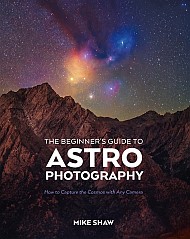Astronomy
Dedicated Amateur Discovers Supernova in Remote Galaxy
Astronomy is increasingly becoming an online affair. Recent discoveries of interstellar Comet 3I/ATLAS and R2 SWAN highlighted this fact, when both were first discussed on message boards and verified via remote telescopes before confirmation. Another recent find also shows what’s possible, as devoted amateur astronomer Filipp Romanov accomplished an amazing feat, and discovered a supernova in a remote galaxy.
Advancing Europe’s quantum secure communications from space
The European Space Agency (ESA) has signed a €50 million contract with aerospace company Thales Alenia Space to begin the preliminary design phase of the Security And cryptoGrAphic (SAGA) mission. This agreement enables SAGA to continue to its preliminary design review, marking a relevant step towards establishing secure, space-based communications using quantum technologies.
Sea-level monitoring satellite unboxed
Following its arrival in California a few weeks ago, the time has come for spacecraft engineers to ready the next sea-level monitoring satellite, Copernicus Sentinel-6B, for launch, which is slated for November.
The first step has been to carefully remove this precious new satellite from its storage container and to start a series of comprehensive checks.
ESA at IAC 2025 - highlights from Day 3
The third day of the 76th International Astronautical Congress was again full of interactions between the European Space Agency and international partners.
Engineered Microbes Pull Critical Minerals from Mining Waste
Biomining uses engineered microbes to harvest critical minerals
Demetre Daskalakis on RFK, Jr., Vaccine Schedule Changes and CDC’s Future
The former director of a CDC center reveals how political ideology is undermining science, threatening vaccine policy and endangering public health across the U.S.
The best new science fiction books of October 2025
The best new science fiction books of October 2025
Is Life inside Enceladus? Cassini Uncovers Complex Organic Chemistry in Saturn’s Ocean Moon
A fresh analysis of old data has found rich organic chemistry within the hidden ocean of Saturn’s moon Enceladus
Cassini proves complex chemistry in Enceladus ocean
Scientists digging through data collected by the Cassini spacecraft have found new complex organic molecules spewing from Saturn’s moon Enceladus. This is a clear sign that complex chemical reactions are taking place within its underground ocean. Some of these reactions could be part of chains that lead to even more complex, potentially biologically relevant molecules.
Published today in Nature Astronomy, this discovery further strengthens the case for a dedicated European Space Agency (ESA) mission to orbit and land on Enceladus.
October Podcast: Pegasus Leads the Way
Pegasus is a large, distinctive constellation that’s easy to spot. During October, you can use it — along with Saturn — to find some amazing celestial sights in their vicinity. Get all the details and lots more stargazing info by downloading this month’s Sky Tour podcast!
The post October Podcast: Pegasus Leads the Way appeared first on Sky & Telescope.
Constraining Proxima b’s Atmosphere, Orbit, and Albedo with RISTRETTO
What new methods can be employed to help astronomers distinguish the light from an exoplanet and its host star so the former’s atmosphere can be better explored? This is what a recent study accepted to Astronomy & Astrophysics hopes to address as an international team of researchers investigated how a novel and proposed telescopic instrument that could be capable of characterizing exoplanet atmospheres in new and exciting ways. This study has the potential to help scientists develop novel tools for examining exoplanets and whether they could possess life as we know it, or even as we don’t know it.
Behold the JWST's Stunningly-Detailed Images of the Largest Star-Forming Cloud in Milky Way
NASA’s James Webb Space Telescope has revealed a colorful array of massive stars and glowing cosmic dust in the Sagittarius B2 molecular cloud, the most massive and active star-forming region in our Milky Way galaxy.
NASA is Looking to Launch Artemis II by February
NASA announced that Artemis II, the first crewed mission to the Moon since the Apollo Era, will launch by February 2026. The crew has named their spacecraft "Integrity" to honor the efforts those working tirelessly to realize NASA's long-awaited return to the Moon.
Setting Bounds On SETI
The Search for Extraterrestrial Intelligence (SETI) has a data scale problem. There are just too many places to look for an interstellar signal, and even if you’re looking in the right place you could be looking at the wrong frequency or at the wrong time. Several strategies have come up to deal narrow the search given this overabundance of data, and a new paper from Naoki Seto of the Kyoto University falls nicely into that category - by using the Brightest Of All TIme (BOAT) Gamma Ray Burst, with some help from our own galaxy.
Is Tylenol Safe for Children? What Research Shows About Acetaminophen
President Trump says Tylenol is not safe for young children. Here’s what the science says about acetaminophen
We now know why a belly button becomes an 'innie'
We now know why a belly button becomes an 'innie'
Music and Science Unite in the Work of Cosmologist Stephon Alexander
A fight against conventionality has driven cosmologist Stephon Alexander on a groundbreaking journey through theoretical physics.
The post Music and Science Unite in the Work of Cosmologist Stephon Alexander appeared first on Sky & Telescope.


